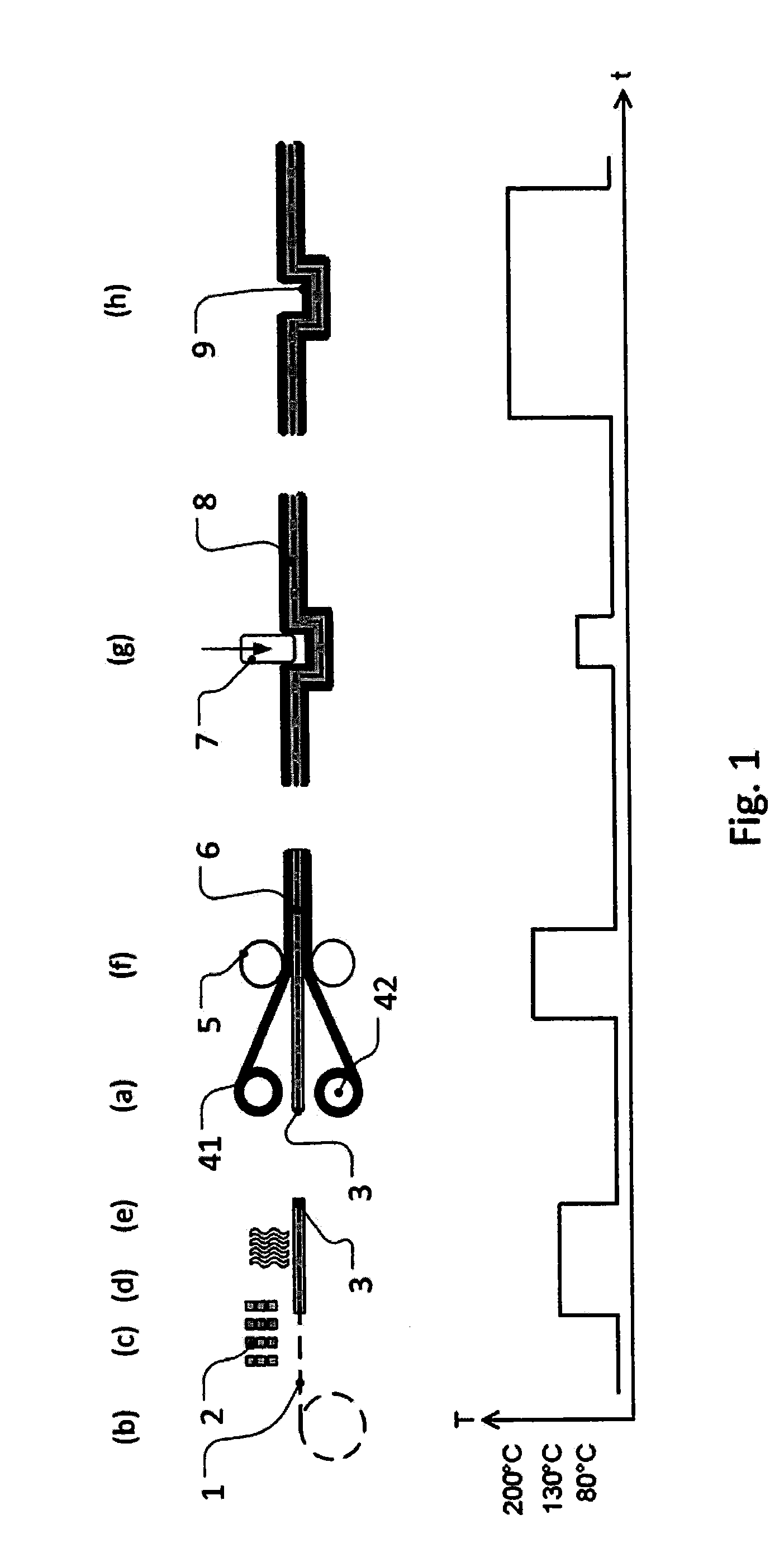Production of fibre composite component part based on steel and polyurethane
- Summary
- Abstract
- Description
- Claims
- Application Information
AI Technical Summary
Benefits of technology
Problems solved by technology
Method used
Image
Examples
examples
[0131]The following woven carbon fibre fabric was used as the textile fabric in all tests: Torayca FT 300 3K 200tex 200 g / m2 twill weave.
[0132]All the tests were carried out using galvanized, cold rolled steel sheets 0.2 mm in sheet thickness. Standard steel sheets from ThyssenKrupp Steel Europe AG without dual-phase or bake-hardening structure were concerned.
[0133]The mixture used in Example 0, a comparative example not in accordance with the present invention, was a reactive polyurethane composition prepared as described in Example 2 of DE102011006163A1. The recipe is depicted in table 0.
[0134]The mixtures used for Inventive Examples 1 and 2 had recipes as per tables 1 and 2.
TABLE 0Recipe of mixture for Comparative Example 0Comparative Example 0 (not in accordance with the present invention)Hardener (60%Uretdione65.3 wt %Evonikstrength)hardenerIndustries(Effective NCO: 7.7%Polyol 4640 (OHN 630Binder10.9 wt %Perstorpmg KOH / g molar mass360 g / mol liquidBenzoinDegassing agent 0.2 wt %...
PUM
| Property | Measurement | Unit |
|---|---|---|
| Temperature | aaaaa | aaaaa |
| Temperature | aaaaa | aaaaa |
| Temperature | aaaaa | aaaaa |
Abstract
Description
Claims
Application Information
 Login to View More
Login to View More - R&D
- Intellectual Property
- Life Sciences
- Materials
- Tech Scout
- Unparalleled Data Quality
- Higher Quality Content
- 60% Fewer Hallucinations
Browse by: Latest US Patents, China's latest patents, Technical Efficacy Thesaurus, Application Domain, Technology Topic, Popular Technical Reports.
© 2025 PatSnap. All rights reserved.Legal|Privacy policy|Modern Slavery Act Transparency Statement|Sitemap|About US| Contact US: help@patsnap.com


